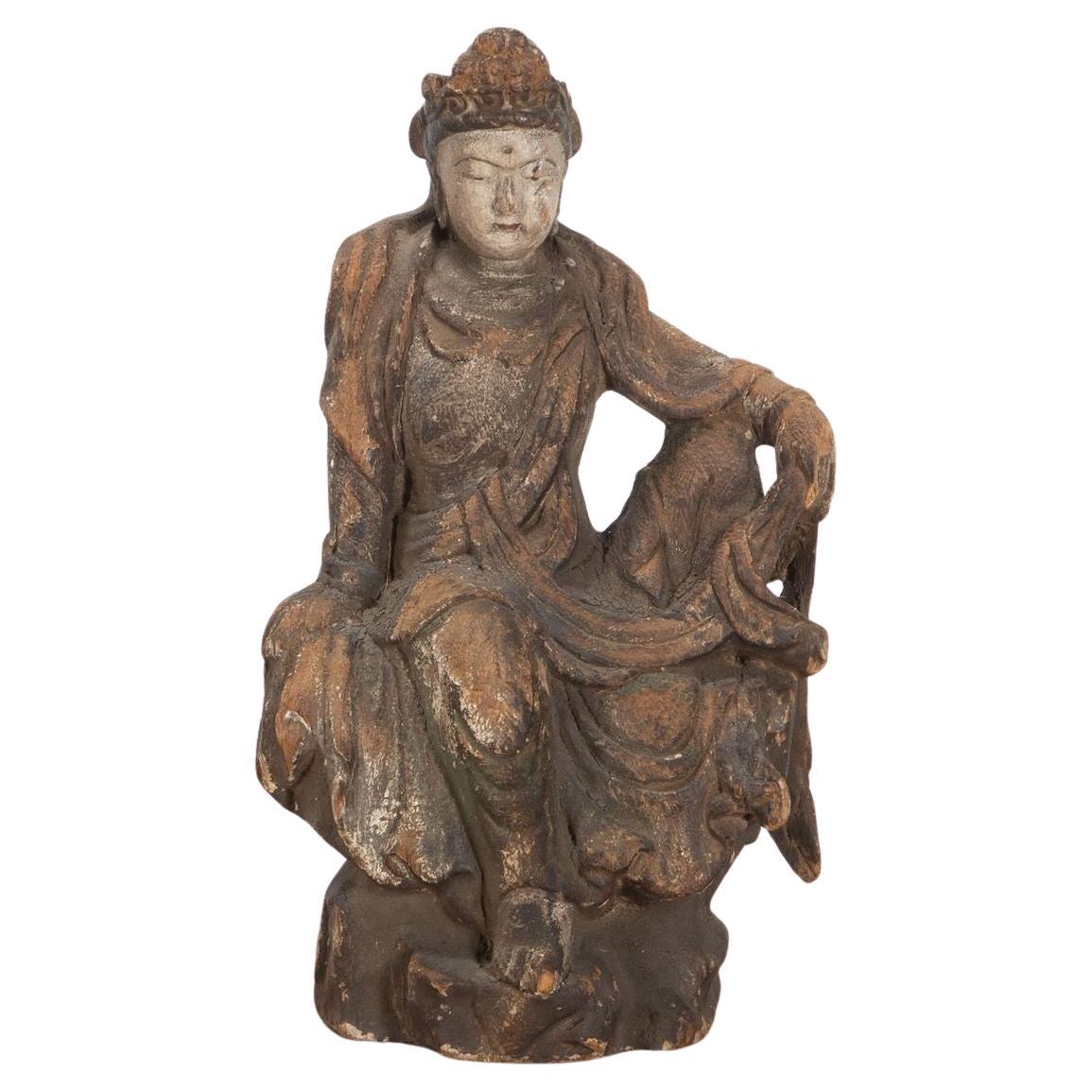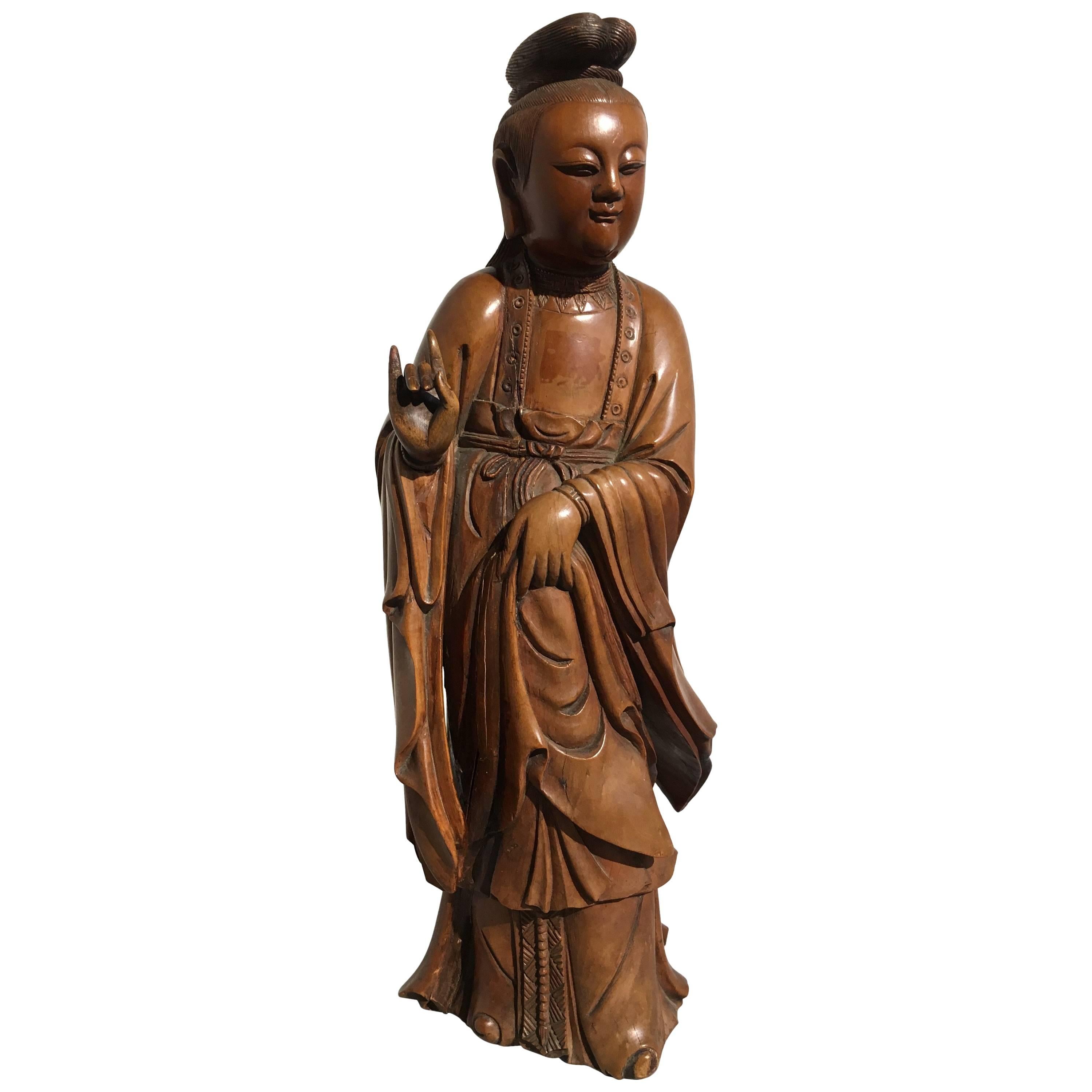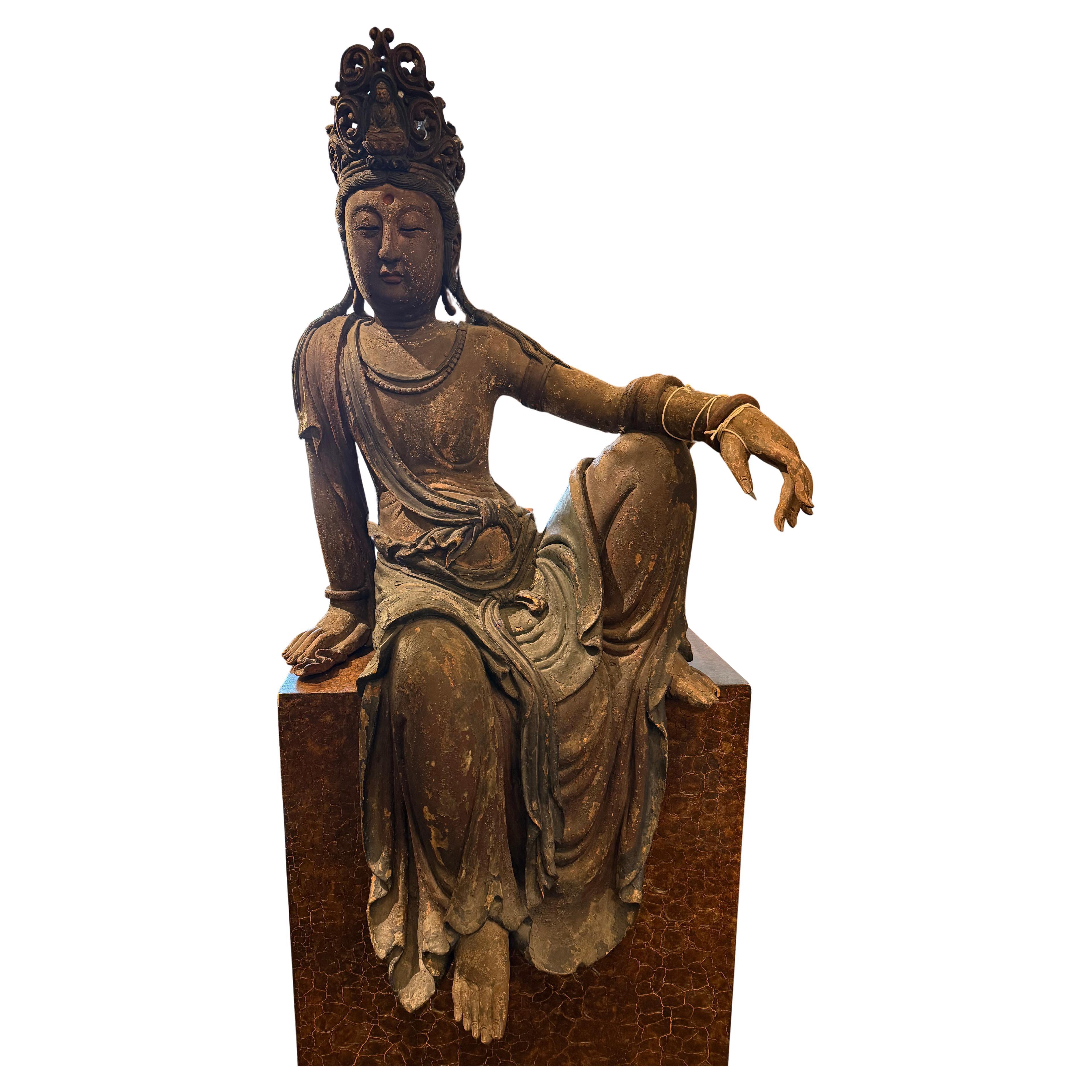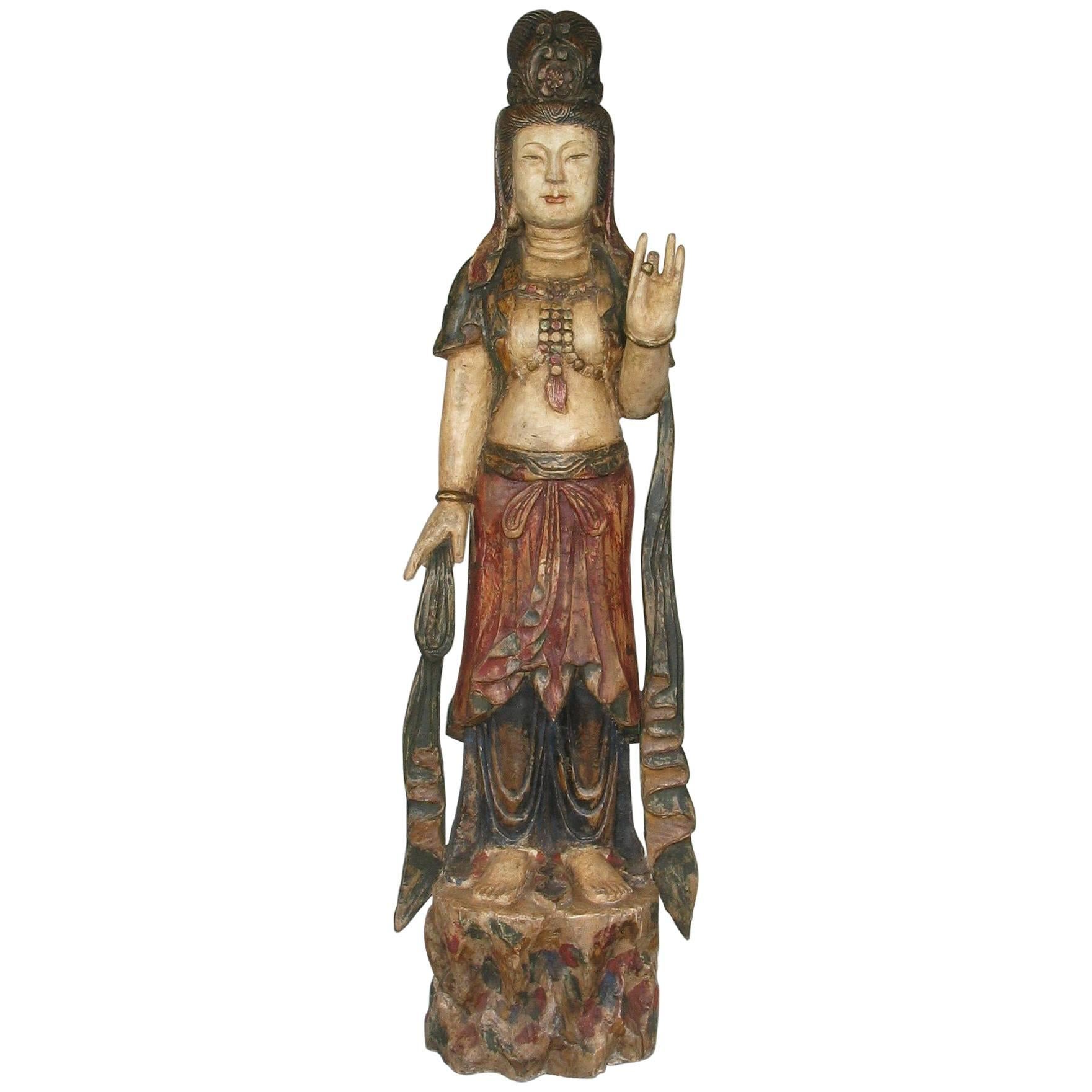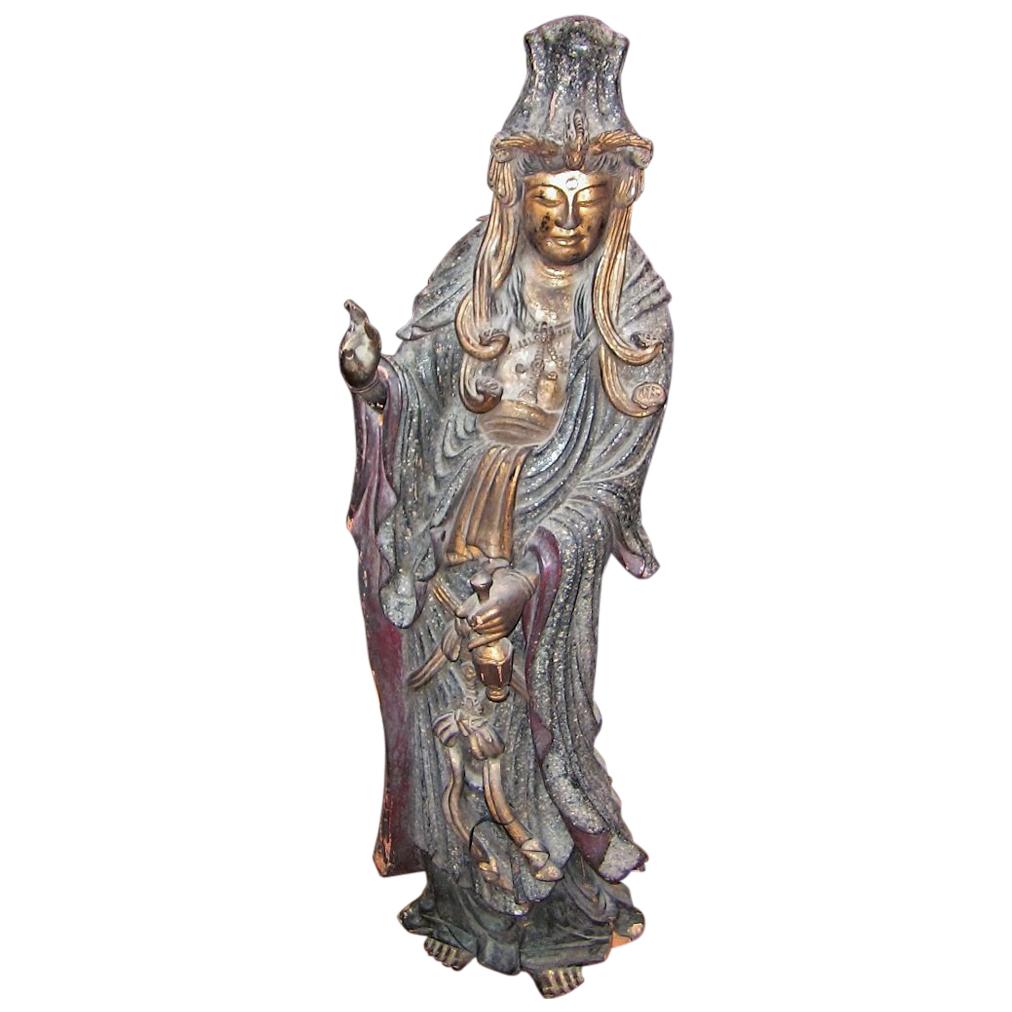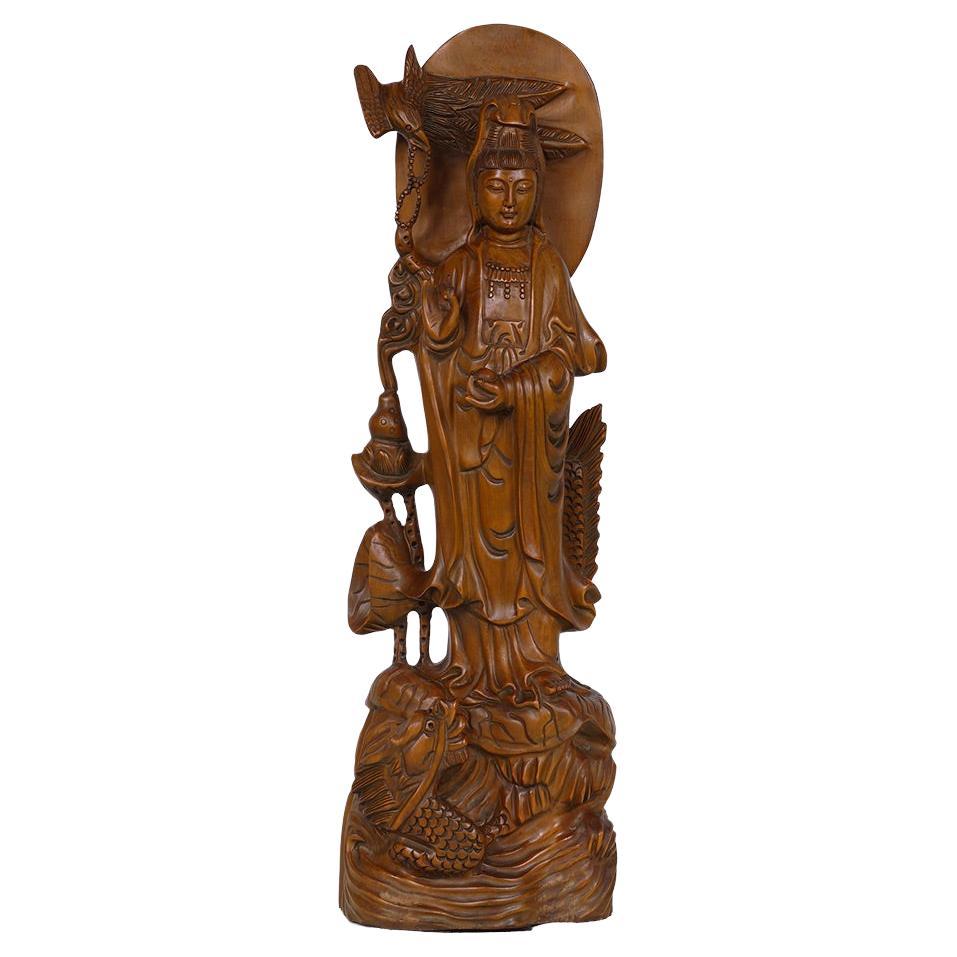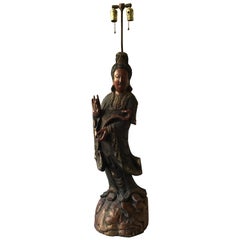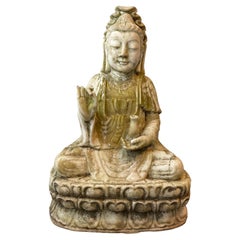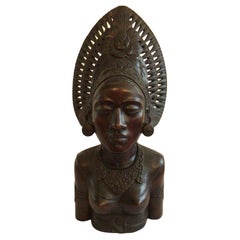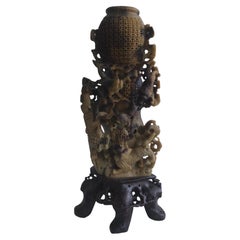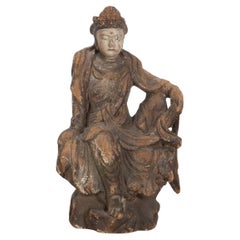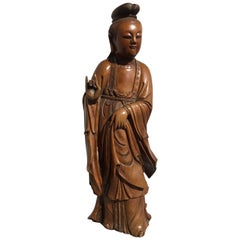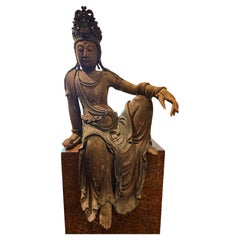Items Similar to 1920s Carved Wood Guanyin Statue
Want more images or videos?
Request additional images or videos from the seller
1 of 17
1920s Carved Wood Guanyin Statue
$1,875
£1,422.71
€1,626.74
CA$2,618.87
A$2,911.82
CHF 1,520.39
MX$35,443.98
NOK 19,399.56
SEK 18,176.46
DKK 12,140.65
Shipping
Retrieving quote...The 1stDibs Promise:
Authenticity Guarantee,
Money-Back Guarantee,
24-Hour Cancellation
About the Item
1920s Carved Wood Guanyin Statue
Beautifully fine carving details
Damage shown in pictures
Crack in neck
- Dimensions:Height: 39 in (99.06 cm)Width: 11 in (27.94 cm)Depth: 8 in (20.32 cm)
- Materials and Techniques:
- Period:
- Date of Manufacture:1920
- Condition:Wear consistent with age and use. Minor losses. Crack in neck - damage shown in pictures.
- Seller Location:Tarrytown, NY
- Reference Number:Seller: GM108231stDibs: LU1078235357652
About the Seller
4.9
Vetted Professional Seller
Every seller passes strict standards for authenticity and reliability
Established in 1993
1stDibs seller since 2014
1,725 sales on 1stDibs
Typical response time: 4 hours
- ShippingRetrieving quote...Shipping from: Tarrytown, NY
- Return Policy
Authenticity Guarantee
In the unlikely event there’s an issue with an item’s authenticity, contact us within 1 year for a full refund. DetailsMoney-Back Guarantee
If your item is not as described, is damaged in transit, or does not arrive, contact us within 7 days for a full refund. Details24-Hour Cancellation
You have a 24-hour grace period in which to reconsider your purchase, with no questions asked.Vetted Professional Sellers
Our world-class sellers must adhere to strict standards for service and quality, maintaining the integrity of our listings.Price-Match Guarantee
If you find that a seller listed the same item for a lower price elsewhere, we’ll match it.Trusted Global Delivery
Our best-in-class carrier network provides specialized shipping options worldwide, including custom delivery.More From This Seller
View AllLarge 1880s Carved Wood Asian Figural Table Lamp
Located in Tarrytown, NY
Large 1880s carved wood Asian figural lamp. From a Scarsdale, NY estate.
Category
Antique 1880s Table Lamps
Materials
Wood
1940s Carved Marble 3 Feet High Siddhartha
Located in Tarrytown, NY
1940s carved marble Siddhartha from a Westchester, NY estate. Left in the garden for 80 years. Fingers missing from one hand.
Category
Vintage 1940s Figurative Sculptures
Materials
Marble
1950s Finely Carved Wood Statue of Thai Woman
Located in Tarrytown, NY
This 1950s finely carved wood statue of a Thai Woman is exquisite from every side. An elaborate headdress with carved openings adds lightness to the piece. Hair is shown tied in the ...
Category
Vintage 1950s Thai Figurative Sculptures
Materials
Wood
1930s Finely Carved Soapstone Statue
Located in Tarrytown, NY
1930s finely carved soapstone statue - all soapstone including base.
Category
Vintage 1930s Abstract Sculptures
Materials
Soapstone
1920s Hand Carved Soapstone Asian Figural Lamp on Brass Base
Located in Tarrytown, NY
1920s hand carved soapstone Asian figural lamp on brass base.
Category
Vintage 1920s Table Lamps
Materials
Soapstone
1960s Charcoal Painted Terracotta Pagoda Statue
Located in Tarrytown, NY
1960s Charcoal Painted Terracotta Pagoda Statue.
Category
Vintage 1960s Unknown Figurative Sculptures
Materials
Terracotta
You May Also Like
Early 17th Century Carved Wood Figure of Guanyin
Located in Gloucestershire, GB
17th Century carved figure of Guanyin in Rajalalitasana position.
Seated on rock with the right arm rested on the right knee. The figures are wearing loose robes that open at the ch...
Category
Antique 17th Century Chinese Figurative Sculptures
Materials
Wood
Chinese Carved Boxwood Figure of Guanyin, Mid-Qing Dynasty
Located in Austin, TX
A sublime Chinese carved boxwood figure of the Bodhisattva of Compassion, Avalokiteshvara, called Guanyin in Chinese, mid-Qing dynasty.
The an...
Category
Antique Late 18th Century Chinese Qing Sculptures and Carvings
Materials
Boxwood
An Important Chinese Carved Wood Figure of Guanyin, Ming Dynasty, 17th Century
Located in ARMADALE, VIC
An Important Chinese Carved Wood Figure of Guanyin, Ming Dynasty, 17th Century
Description:
A dignified portrayal of the bodhisattva, respl...
Category
Antique 17th Century Chinese Ming Sculptures and Carvings
Materials
Wood
Chinese Carved Wood Standing Figure of Guanyin in the Ming Dynasty Style
Located in Ottawa, Ontario
A Chinese carved wood standing figure of Guanyin in the Ming dynasty style, with polychrome application, the hair tied back into an elaborate high chignon, with her left hand raised,...
Category
Early 20th Century Chinese Chinoiserie Sculptures and Carvings
Materials
Wood
19 Century Asian Wooden Carved, Painted and Gilded Guanyin Statue
Located in Dallas, TX
Presenting a stunning 19 century Asian wooden carved, painted and gilded Guanyin statue.
This wooden statue is hand carved, hand painted and hand-gil...
Category
Antique Late 19th Century Korean Folk Art Sculptures and Carvings
Materials
Wood, Giltwood, Lacquer
20th Century Chinese Wooden Carved Guan Yin Statuary
Located in Pomona, CA
This magnificent Chinese wood carved Quan Yin Statuary. It shows very detailed hand carving works on it. It is all hand made and hand carved Quan Yin standing on the dragon from boxw...
Category
20th Century Chinese Chinese Export Sculptures and Carvings
Materials
Boxwood
More Ways To Browse
Antique Wood Statue
1920s Wood Sculpture
Asian Carved Wood Statue
Carved Wood Statues
Antique Guanyin
Guanyin Sculpture
Carved Guanyin
Wood Guanyin
Guanyin Statue
Guanyin Carved Wood
Wood Shrine
Gilted Buddha
Carved Green Jade Chinese
Asian Shrine
Carved Wood 19th Century Japanese
Vintage Hindu
Vintage Chinese Carving
Horse Carving
